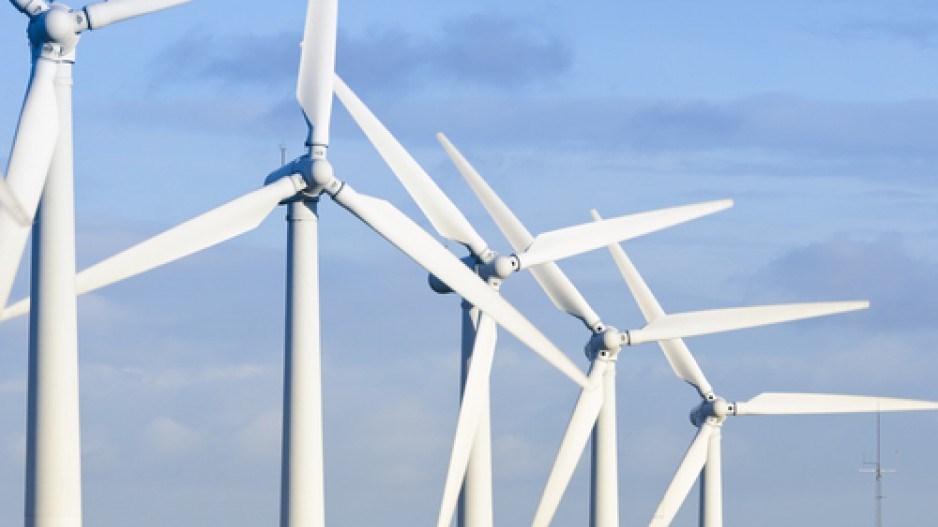At first blush, the BC Utilities Commission’s (BCUC) final report on the Site C dam might give independent power producers, especially wind power developers, hope of a revival.
The report states that “increasingly viable alternative energy sources such as wind, geothermal and industrial curtailment could provide similar benefits to ratepayers as the Site C project, with an equal or lower unit energy cost.” But that’s assuming B.C. needs to generate more power, something the BCUC report casts doubt on. For a decade, a private power industry thrived in B.C. after then-B.C. premier Gordon Campbell’s direction to BC Hydro that it finance new wind and run-of-river projects by offering long-term contracts to private developers. But when the government decided to proceed with Site C, it signalled to independent power producers the party was over. At the beginning of 2016, the Canadian Wind Energy Association (CanWea) withdrew its regional director from B.C. to focus on Alberta and Saskatchewan, where there are greater prospects to develop wind power projects. And its counterpart in the geothermal energy sector, the Canadian Geothermal Energy Association, never did get much traction in B.C.
The BCUC’s final report appears to give wind and geothermal a stamp of approval of sorts.
It takes issue with BC Hydro’s pricing for alternative energy sources, concluding that wind and geothermal would be just as cost-effective. The report presents three possible alternative portfolios, all of which include more than 400 megawatts (MW) of wind power (twice the capacity of the new Meikle Wind project near Tumbler Ridge) and two of which include 81 MW of geothermal energy.
Because wind power can be deployed incrementally, Jean-François Nolet, vice-president of communications for CanWEA, said wind is well positioned in B.C., should the province need new power.
“We have plenty of shovel-ready projects, Nolet said, adding that they can be built in as little as two to four years.
The problem for independent power producers is that those alternatives will be needed only if there is a demand for additional power in B.C., and the BCUC has questioned that, calling BC Hydro’s load forecasts “excessively optimistic.”
BC Hydro uses high, low and medium load forecasts. It uses the medium forecast for its resource planning. The BCUC recommends that the lowest forecast be used to assess future power needs. It goes even further, however, and suggests than even the lowest load forecast might be too high, stating that “there are risks that could result in demand being less than the low case.”
Harry Swain, who chaired the joint review panel that originally reviewed the Site C dam project, said B.C. needs neither a new hydroelectric dam nor any new wind power projects.
Thanks to energy conservation, falling industrial demand and flat growth in demand from the commercial and residential sector, Swain believes B.C. now has all the power-generating capacity it needs for the next 20 years.
“With the modelling that I did, I assumed – as BC Hydro did – that the population is going to increase, that GDP will increase,” he said. “I even threw in 580,000 electric cars, and you still come out with flat residential and commercial demand for the next 20 years, and falling industrial demand.”
And if B.C. needs more power for peak periods, it can cut back on the power it sells to the U.S., or amend the Clean Energy Act to allow the province to claim baseload power under the Columbia River Treaty, buy it on the open market or fire up the Burrard thermal power plant during peak demand times.
“The Clean Energy Act has a number of irrationalities in it that might have sounded good 10 years ago but don’t anymore,” Swain said.




